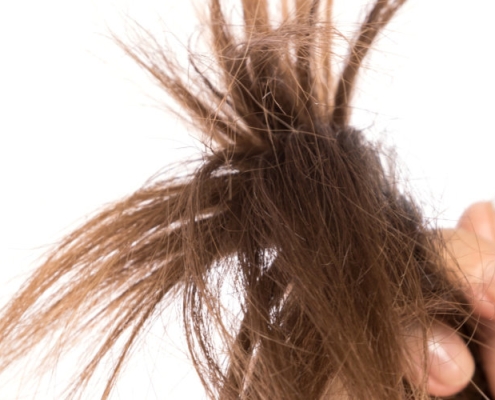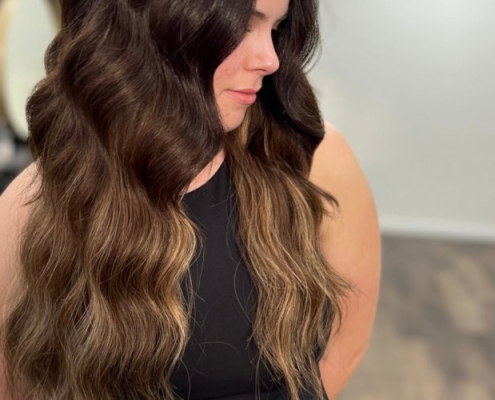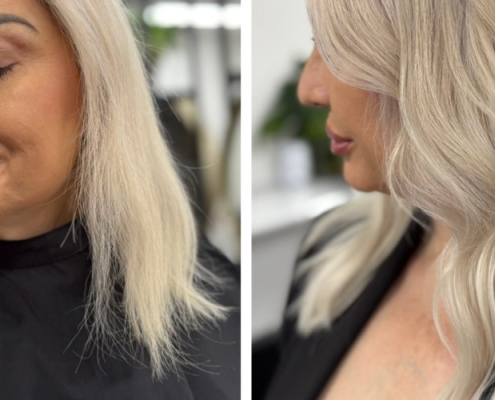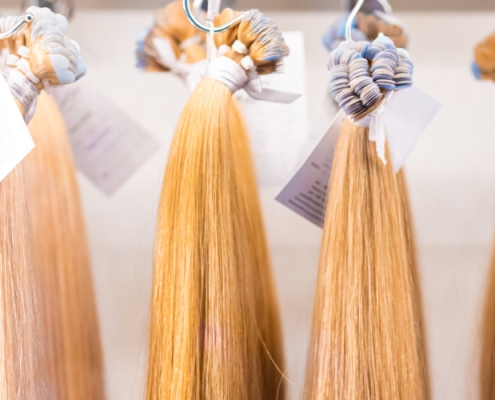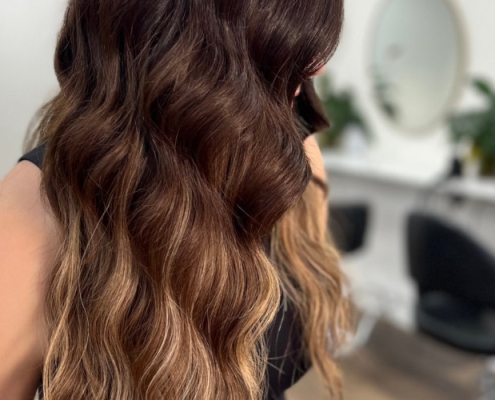When to Replace Hair Extensions: Signs It’s Time for a New Set
Hair extensions can elevate your look, boost your confidence, and help you feel like the best version of yourself — but they don’t last forever. Even the highest quality extensions have a limited lifespan, and knowing when to replace them is key to maintaining a natural, healthy, and polished appearance.
At The Cutting Room, we work with premium flat-tracked wefts and invisible application techniques that blend seamlessly with your natural hair. But like anything that gets worn daily, your extensions will eventually need to be refreshed or replaced. So how do you know when it’s time? Let’s walk through the key signs and what they mean for your hair.
1. Tangling and Matting Has Increased
One of the earliest signs that your extensions are nearing the end of their life is a noticeable increase in tangling and matting — especially at the nape of the neck or when your hair is down.
Example: You brush your hair in the morning, but by lunchtime it’s already knotting. Even braiding before bed doesn’t prevent matting, and your detangling routine now takes double the time.
Why it matters: This often happens when the cuticle of the hair has worn down due to heat, washing, and daily wear. Once the outer layer of the hair fibre is compromised, the strands start sticking together, leading to tangles that don’t brush out easily — and can damage your natural hair in the process.
2. The Hair Feels Dry, Brittle, or Coarse
Extensions that once felt smooth and silky can become dry, rough, or straw-like over time. Even after deep conditioning, the hair doesn’t feel revived — and it starts resisting styling altogether.
Example: You apply a leave-in treatment, but the hair still looks frizzy and feels dry. Your curls don’t hold, and the ends remain puffy or crunchy despite all your efforts.
What’s happening: This is a sign of fatigue in the hair fibres. Heat tools, UV exposure, water quality, and even styling products gradually degrade the integrity of the hair. Once the strands become porous and stripped of moisture, it’s time to consider a new set.
3. The Ends Are Thinning or Shedding Excessively
Over time, extensions can shed and thin — particularly through the lengths and ends. If your once-full set is starting to look sparse or stringy, especially after a trim, the hair may have reached the end of its lifespan.
Example: You’ve trimmed your extensions twice already, but the fullness hasn’t returned. They look flat at the bottom and uneven even after styling.
What to look for: Split ends, short broken strands, or visibly lighter density at the tips. These are all signs the hair is breaking down and can no longer hold a natural shape.
4. Your Extensions Have Been Reinstalled Several Times
While one of the benefits of high-quality wefts is that they can be reused, there’s a limit to how many times they can be reinstalled before the stitching, bonds, or hair itself starts to deteriorate.
Example: You’ve had the same wefts moved up and reapplied four times over six months. Now the edges are fraying, some stitching has come loose, and the hair sheds more easily during brushing.
Our advice: Most professional extensions can be reused for three to four installations with proper care. After that, they should be professionally assessed for signs of wear or weakness.
5. The Colour No Longer Matches Your Hair
Hair colour naturally shifts over time — whether it’s sun exposure, regrowth, or your last gloss or toner appointment. When your extensions no longer blend perfectly with your natural shade, they can draw unwanted attention.
Example: You notice a clear difference in tone between your own hair and the extensions, especially around your face or in natural light. They no longer blend with your layers, and the contrast is obvious in photos.
Fix or replace? Some minor tone adjustments can be made with a toner or gloss, but over-processed extensions won’t hold colour evenly. If the mismatch is more than subtle, it’s time to replace the set.
6. You’ve Outgrown the Look or Style
Sometimes your extensions are technically still wearable — but they no longer suit your current style, lifestyle, or face shape. That’s just as valid a reason to replace them.
Example: You’ve had ultra-long extensions for months but now want a more low-maintenance look. Or maybe your natural hair has changed shape or density, and the old extensions don’t blend as well anymore.
Fresh start: Extensions should make you feel amazing. If they no longer spark confidence, it’s time for something new — a new cut, a new length, or a new type of extension entirely.
7. Your Invisible Extensions Are Starting to Show
Invisible flat-tracked weft extensions are known for their discreet finish — but over time, movement, regrowth, and wear can make them more visible. This might mean they’re slipping, lifting, or not sitting flush against the scalp.
Example: You start to notice a bump under your hair near the scalp where the weft sits, or someone has mentioned they can “see something” when your hair is tied back.
Why it happens: Over time, your natural hair grows and the weft loosens slightly from its original placement. This can make it harder to keep the extension fully concealed. If you’ve also had the same wefts for several reuses, the track stitching may have become bulkier, making it harder to lie flat.
Solution: We can reapply a new set using the latest invisible methods, ensuring that the wefts sit smoothly against your head for a truly undetectable finish — even in short cuts or layered styles.
How Long Do Extensions Typically Last?
With excellent care, high-quality extensions last:
- Daily wear: 3 to 4 months
- Occasional wear: Up to 6 months
- Reinstallation lifespan: Typically 3–4 move-ups before replacement
Factors like heat styling, shampoo frequency, brushing habits, and your local water quality can affect longevity. Using salon-recommended products is one of the easiest ways to extend the life of your extensions.
FAQs: When Should I Replace My Hair Extensions?
Can I just trim the ends to make them last longer?
You can — and we often do — but it’s a short-term fix. If the hair feels dry, thin, or uneven after trimming, a new set is likely needed to restore fullness and shape.
How often should I replace my invisible wefts?
With proper care, invisible flat-tracked wefts can be reinstalled about 3–4 times. If they begin to slip, fray, or lose their flat lay, it’s time to consider a fresh set.
What if the extensions still look okay, but I’ve had them for a long time?
We’ll check them during your maintenance appointment. Even if they look fine to you, we assess wear under the track line, hair quality, and stitch integrity — the parts you don’t usually see.
Can I reuse some of my extensions and just add new ones?
In some cases, yes — if your existing wefts are still in excellent condition and the colour still matches. We can blend old and new wefts if needed, but only when they meet our quality standard.
What’s the biggest sign I need to replace my extensions?
If your extensions are no longer easy to manage, don’t blend well, or just don’t bring you joy anymore — it’s time. Styling shouldn’t be a battle, and your hair should make you feel great.
Let’s Bring Back That Fresh Hair Feeling
If your extensions are showing any of these signs, let’s talk. We’ll assess your current set, discuss your lifestyle and style goals, and recommend a plan — whether it’s a new length, method, or full refresh.
Book your free consultation here
Because extensions should never be a chore — they should be your favourite feature.


